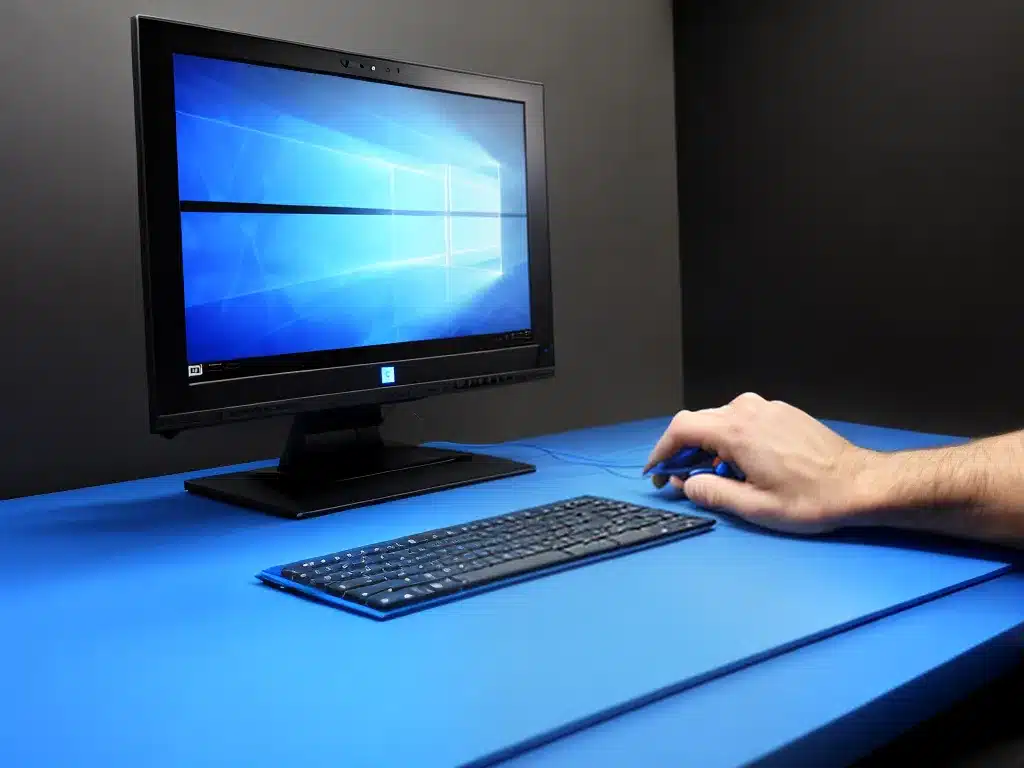
The infamous Blue Screen of Death (BSOD) can be frustrating when it randomly appears and crashes your Windows PC. Thankfully, there are several ways to troubleshoot and fix many common BSOD errors. Here is an in-depth guide on diagnosing and resolving BSOD crashes in Windows.
Understanding BSOD Errors
The Blue Screen of Death displays when Windows encounters a critical error it cannot recover from. It displays error details that can help identify the root cause.
Common causes include:
-
Faulty hardware – Issues with RAM, hard drives, graphics cards or other hardware can trigger a BSOD.
-
Driver conflicts – Incompatible, buggy or outdated device drivers often cause BSOD crashes.
-
Software issues – Problems with installed programs, viruses, or a corrupted Windows system file can crash the system.
-
Overheating – Excessive heat leading to hardware damage can generate BSOD errors.
The BSOD displays an error code and message with details about the crash. Write down the full error details as they will be useful for troubleshooting.
Troubleshooting Blue Screen Crashes
Pinpointing the cause of a BSOD requires methodical troubleshooting. Here are some steps to diagnose these system crashes:
Check the Error Message
The error code and message provide clues about the failure. Search online to understand the error meaning and probable causes.
Common error codes include:
-
PAGE_FAULT_IN_NONPAGED_AREA– Faulty memory (RAM) is a likely cause. -
IRQL_NOT_LESS_OR_EQUAL– Often due to faulty drivers. -
KMODE_EXCEPTION_NOT_HANDLED– Generally indicates faulty hardware or drivers. -
SYSTEM_THREAD_EXCEPTION_NOT_HANDLED– Likely caused by a faulty driver.
Update Device Drivers
Update all device drivers to the latest versions, especially graphics card, storage and motherboard drivers. Incompatible drivers often cause BSOD crashes.
-
Use Windows Update or manufacturers’ websites to update drivers.
-
Remove unused drivers with the Device Manager or third-party tools like Snappy Driver Installer.
Check System File Integrity
Use System File Checker to scan Windows system files and replace corrupted files:
-
Open Command Prompt as admin and run
sfc /scannow. -
This scans Windows files and repairs issues. Reboot and test if BSOD persists.
Stress Test Hardware
Use system diagnostics tools like Windows Memory Diagnostic and hard drive utilities to stress test RAM and storage drives.
-
Faulty hardware components often cause BSOD crashes under heavy load.
-
If crashes reappear during testing, the component likely needs replacement.
Check Temperatures
Monitor system temperatures to check for overheating components. Overheating can damage hardware and cause BSODs.
-
Use hardware monitoring tools like Speccy or HWInfo to check temperatures.
-
Reseat components, check fans and clean vents if any components are overheating.
Try System Restore
Perform a System Restore to revert Windows to an earlier working state:
-
Boot into Safe Mode and roll-back using a restore point before the BSOD appeared.
-
If BSOD does not reoccur, a recent software change was likely the cause.
Clean Boot
Perform a Clean Boot – boot Windows with only essential devices and services loaded:
- Enter msconfig
- Go to the Services tab and check ‘Hide all Microsoft services’
- Disable all entries apart from the essential services
- Go to the Startup tab and disable all entries
- Restart the PC and test if BSOD persists in clean boot state
This isolates software and driver conflicts. If BSOD disappears, re-enable groups of startup items step-by-step until failure reappears – the last group enabled will point to the conflict.
Fixing Common BSOD Errors
Here are some solutions for frequent Blue Screen error codes:
PAGE_FAULT_IN_NONPAGED_AREA
This usually indicates faulty memory modules. Try the following fixes:
-
Run Memory Diagnostics to detect errors with RAM sticks.
-
Reseat RAM modules and clean contacts with an eraser.
-
Test RAM sticks individually in different slots to isolate failures.
-
Replace defective RAM sticks.
IRQL_NOT_LESS_OR_EQUAL
The main causes are faulty or incompatible drivers. Try updating or removing drivers:
-
Update all motherboard, storage and network drivers.
-
Uninstall recently added drivers using Device Manager.
-
Remove unused drivers left over from uninstalled hardware.
-
Check for BIOS updates if crashes persist.
SYSTEM_SERVICE_EXCEPTION
This error has multiple possible causes like:
-
Corrupted system files – Run SFC and DISM scans to repair system files.
-
Faulty hard drives – Check SMART drive health statistics in Disk Utility.
-
Overheating – Monitor temperatures and check cooling systems.
-
Defective hardware like RAM or processors – Test components with diagnostics tools.
KMODE_EXCEPTION_NOT_HANDLED
This typically occurs due to faulty driver installation or pending Windows Updates. Try:
-
Rollback recently updated drivers using Device Manager.
-
Install all pending Windows and driver updates.
-
Boot into Safe Mode – if no BSOD, a startup program is the issue.
In summary, Blue Screen errors can appear mysteriously but using appropriate troubleshooting steps can help identify and resolve the underlying cause. Check error codes, stress test hardware with diagnostics tools, update drivers, repair system files and analyze crash dump files if needed. This will help troubleshoot most BSOD crashes and avoid frustrating system crashes.












